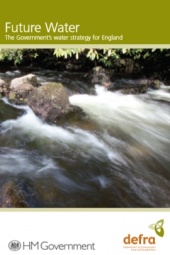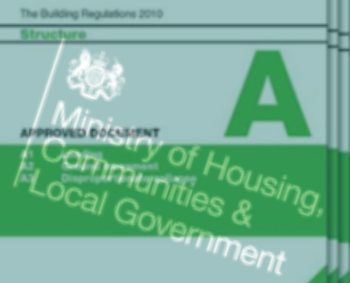Future Water, The Government’s water strategy for England
In 2008, the government published Future Water, The Government’s water strategy for England. The strategy was published as a response to the 2004-06 South East of England droughts and the floods of 2007. It set out the government’s vision for the water sector in 2030 and the measures proposed to help deliver that vision.
In the Foreword, the then Secretary of State for Environment, Food and Rural Affairs, Hilary Benn said:
“In England, the average person uses about 150 litres of water a day – that’s about a tonne a week!... The South East and East of England already face increasing demand on a finite water supply. The drought of 2004-06 was only managed through controls on what we could use water for. This was not a one-off; indeed droughts are likely to be more common. By 2080, some long term climate projections forecast half as much rainfall in summer (nothing like fully offset by 30% more rainfall in winter) in the South East. We need to plan ahead and each of us needs to play our part…. We have, of course, not only to cope with too little water. Indeed the last year has been characterised more by too much water with serious flooding in many parts of the country. Sir Michael Pitt’s report into these floods shows that we still have lessons to learn as a country about defending ourselves from, and learning to live with, floods.”
The document describes ‘...a vision of a sector that values and protects its water resources; that delivers water to customers through fair, affordable and cost-reflective charges; where flood risk is addressed with markedly greater understanding and use of good surface water management; and where the water industry has cut its greenhouse gas emissions.’ This includes:
- The sustainable delivery of stable water supplies.
- Clean water available for nature, people and business.
- An improved and protected water environment.
- An improvement in canals, lakes, rivers and seas for people and wildlife which benefits angling, sailing and other recreational past times.
- Appropriate water charging.
- Action for flood risk through the appropriate use of good surface water management.
- A reduction in greenhouse gas emissions from the water sector.
- An understanding and resilience to climate change including the likely increase in the frequency of droughts and flooding and the rise in population levels.
The document is divided into the following sections:
- Ministerial Foreword.
- Executive Summary.
- Chapter 1 – Future water.
- Chapter 2 – Water demand.
- Chapter 3 – Water supply.
- Chapter 4 – Water quality in the natural environment.
- Chapter 5 – Surface water drainage.
- Chapter 6 – River and coastal flooding.
- Chapter 7 – Greenhouse gas emission.
- Chapter 8 – Charging for water.
- Chapter 9 – Regulatory framework, competition and innovation.
- Chapter 10 – Summary of vision and actions.
[edit] Related articles on Designing Buildings
- Catchment flood management plans.
- Flood.
- Flood and Water Management Act.
- Flood insurance.
- Flood Re.
- Flood risk management plans.
- Flood risk.
- Marine energy and hydropower.
- Pitt Review Lessons learned from the 2007 floods.
- Planning for floods.
- River engineering.
- Sustainable urban drainage systems (SUDS).
- Water engineering.
[edit] External references
Featured articles and news
The 5 elements of seiri, seiton, seiso, seiketsu and shitsuke.
Shading for housing, a design guide
A look back at embedding a new culture of shading.
The Architectural Technology Awards
The AT Awards 2025 are open for entries!
ECA Blueprint for Electrification
The 'mosaic of interconnected challenges' and how to deliver the UK’s Transition to Clean Power.
Grenfell Tower Principal Contractor Award notice
Tower repair and maintenance contractor announced as demolition contractor.
Passivhaus social homes benefit from heat pump service
Sixteen new homes designed and built to achieve Passivhaus constructed in Dumfries & Galloway.
CABE Publishes Results of 2025 Building Control Survey
Concern over lack of understanding of how roles have changed since the introduction of the BSA 2022.
British Architectural Sculpture 1851-1951
A rich heritage of decorative and figurative sculpture. Book review.
A programme to tackle the lack of diversity.
Independent Building Control review panel
Five members of the newly established, Grenfell Tower Inquiry recommended, panel appointed.
Welsh Recharging Electrical Skills Charter progresses
ECA progressing on the ‘asks’ of the Recharging Electrical Skills Charter at the Senedd in Wales.
A brief history from 1890s to 2020s.
CIOB and CORBON combine forces
To elevate professional standards in Nigeria’s construction industry.
Amendment to the GB Energy Bill welcomed by ECA
Move prevents nationally-owned energy company from investing in solar panels produced by modern slavery.
Gregor Harvie argues that AI is state-sanctioned theft of IP.
Experimental AI housing target help for councils
Experimental AI could help councils meet housing targets by digitising records.
BSRIA Occupant Wellbeing survey BOW
Occupant satisfaction and wellbeing tool inc. physical environment, indoor facilities, functionality and accessibility.
























